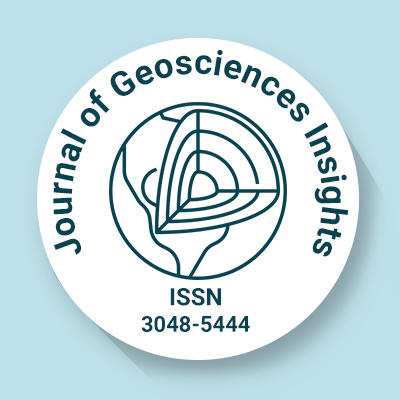
Journal of Geosciences Insights
OPEN ACCESS
ISSN: 3048-5444

OPEN ACCESS
ISSN: 3048-5444
Artificial intelligence (AI) is transforming the field of geoscience by improving data analysis, predictive power, and decision-making. Increasing access to satellites, sensors, and survey data is being supplemented with big data, and AI-based methods like machine learning (ML) and deep learning (DL) are making processes more efficient in different geoscience applications. This paper discusses the use of AI in remote sensing, in which AI improves satellite image interpretation for environmental monitoring and land-use planning. It also discusses the role of AI in seismic interpretation, enhancing earthquake prediction by recognizing patterns in seismic waves. Climate models based on AI improve weather forecasting and long-term climate projections, while AI-based mineral exploration speeds up the identification of natural resources. AI also maximizes hydrological research, enhancing water resource management and flood risk forecasting. In the future, AI is going to be automating geological field investigations, joining with geospatial technologies, and creating digital twins for simulations on Earth. Difficulties ranging from available data to cost for computation to ethics must also be met. By achieving the above limitations, AI could bring about radical improvements in geoscientific exploration, enabling greater accuracy, reducing costs, and increasing sustainability.
Microbiomes play a dual role in the preservation and degradation of archaeological artifacts. Certain microbial communities, such as Aspergillus, Cladosporium, and Pseudomonas, contribute to biodeterioration through acid production, enzymatic degradation, and biofilm formation. Conversely, species like Bacillus and Actinobacteria facilitate preservation via biomineralization and microbially induced calcite precipitation (MICP), reinforcing structural integrity. Recent advancements in metagenomics and proteomics have improved the characterization of microbial communities in heritage sites. However, challenges persist in distinguishing beneficial from harmful microbiota and understanding their long-term ecological dynamics. While biofilms contribute to biodeterioration in sites such as Lascaux Cave, controlled microbial biofilms have been successfully applied in the Roman Catacombs to protect surfaces. Genetic engineering, including CRISPR-based modifications, holds potential for conservation but remains in its early stages of application. Digital heritage technologies, such as 3D scanning, Raman spectroscopy, and Fourier-transform infrared (FTIR) spectroscopy, provide non-invasive means to analyze microbial colonization patterns and biodeterioration processes. These approaches enable real-time monitoring and evidence-based conservation strategies. Sustainable microbiome-based conservation efforts, such as biomineralization using Bacillus spp., have been implemented at Angkor Wat, demonstrating microbial interventions' efficacy in stabilizing heritage structures. This review explores the role of geoarchaeological microbiomes in artifact preservation and deterioration, highlighting the mechanisms through which microorganisms influence cultural heritage materials. By synthesizing current research on microbial interactions, conservation challenges, and technological advancements, it aims to provide insights into sustainable preservation approaches.
Marine geology explores the composition, structure, and dynamic processes of the ocean floor, revealing critical insights into Earth's history and its ongoing geological evolution. This paper delves into the key areas of marine geology, including plate tectonics, seafloor spreading, sedimentation, and hydrothermal activity, highlighting their roles in shaping the underwater landscape. Advancements in remote sensing, submersible technology, and deep-sea drilling have enabled unprecedented access to the ocean's depths, uncovering submerged mountain ranges, vast sedimentary basins, and evidence of past climatic and tectonic events. The study emphasizes the importance of marine geology in understanding natural hazards such as earthquakes and tsunamis, as well as its implications for resource exploration and environmental management. By investigating the hidden features beneath the ocean’s surface, marine geology continues to expand our knowledge of Earth’s complex systems and the interconnectedness of terrestrial and marine environments.
